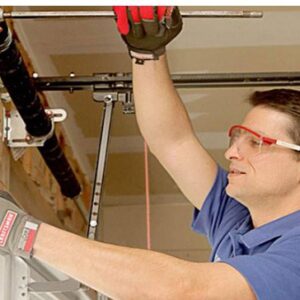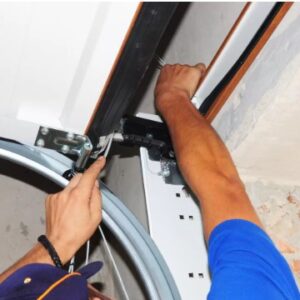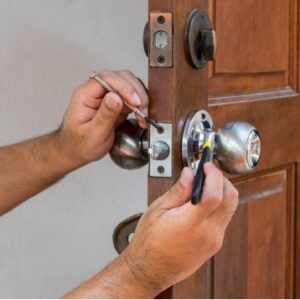Capturing a wedding outdoors offers a sense of openness and beauty that few indoor venues can match. Toronto’s parks, waterfronts, and gardens create stunning backdrops for couples who want their day to feel natural and timeless. Yet filming outdoors comes with challenges, lighting, wind, and large spaces can complicate video coverage. That is where drone videography changes everything. It brings new perspective, depth, and cinematic movement to wedding films, turning a personal story into something that feels alive.
The Advantage of Aerial Storytelling
A drone allows us to show more than a close-up view of the couple. It can capture the setting in full—trees swaying, guests gathering, the skyline beyond the venue. These wide shots help tell the full story of the day, showing not only who was there but where everything happened.
From above, we can follow the bride’s arrival, record the ceremony in context, or show the reception layout as night falls. The contrast between intimate handheld shots and sweeping aerial views creates rhythm and balance. The film becomes more than documentation—it becomes a visual memory of movement, space, and emotion intertwined.
Planning Ahead for Drone Use
Drone filming requires preparation long before the wedding day. We start by visiting the location, checking obstacles like trees or nearby buildings, and confirming that drone use is allowed in that area. Many parks and venues in Toronto require permits, and it is always better to handle those early.
Weather plays a big part as well. A clear day is ideal, but even light wind can affect stability. We monitor forecasts throughout the week and always have a backup plan for indoor or ground-based shots if flying conditions change.
Communication with the venue staff is another key step. Some outdoor spaces have restrictions on when or where drones can be flown. Coordinating with them prevents surprises and keeps the event smooth.
Working Safely and Respectfully
Drone footage should never distract guests or interfere with the ceremony. We keep a respectful distance, using high-quality lenses that allow detailed shots from far away. During vows or other quiet moments, we avoid flying completely so that nothing breaks the atmosphere.
It is also important to follow all local aviation rules. Toronto’s regulations limit flight height, distance, and proximity to people. Staying within those limits ensures both safety and professionalism. For us, safety always comes first, both for guests and for maintaining the integrity of the event.
Lighting and Timing
Natural light changes quickly outdoors. We often schedule drone shots around the best lighting conditions, which usually occur during the “golden hour”, just after sunrise or before sunset. This light is softer, warmer, and more flattering on skin tones.
Midday light can create harsh shadows, especially on bright summer days. When that happens, we adjust exposure carefully or plan drone shots that use the environment for balance, such as flying above trees or water where the reflection diffuses brightness.
For evening receptions, ambient lighting from candles, tents, or nearby buildings can still allow for creative drone use. With the right camera settings, these moments can produce cinematic results even in low light.
Choosing the Right Angles
A good drone operator thinks in layers, foreground, midground, and background. Instead of just going high and wide, we often use movement to tell a story. A slow lift-off from behind a tree can reveal the ceremony site. A low glide along the aisle can follow the couple’s first walk together.
Angles that show the interaction between guests, the environment, and the couple create emotional context. Wide shots alone may look beautiful but can feel distant. Combining them with closer ground shots provides the balance between scale and intimacy that defines a strong wedding film.
Each movement should feel natural and timed with the rhythm of the event. Drones are tools for emotion, not just spectacle.
Sound and Editing Considerations
Drones record visuals, not sound, but their shots still need to blend smoothly with the rest of the wedding video. We synchronize drone footage with ambient sound, recorded separately on-site. This gives every aerial sequence the life and emotion of real sound, from laughter to applause.
Editing drone shots takes sensitivity. Too many aerial clips can break the connection to the people being filmed. We focus on quality, not quantity, using them to enhance key moments, the opening, transitions, or the closing sequence.
In post-production, color grading helps unify footage from drones and ground cameras. Toronto’s natural greens, blues, and sunset tones often appear in varying intensities, so consistent color correction keeps the visual story seamless.
Common Challenges and How We Solve Them
Outdoor drone filming in Toronto brings unique challenges. The city’s changing weather, wind patterns, and airspace restrictions mean flexibility is crucial. We always carry backup batteries and spare parts, since flight time is limited and conditions can change quickly.
Another issue is interference from nearby electronic signals. In busy areas, this can affect flight stability. We use professional equipment with strong transmission and pre-check GPS signal strength before every flight.
Occasionally, unexpected elements like birds or nearby events require quick decisions. We adapt instantly, switching to manual control if needed and rescheduling certain shots when conditions are better.
Preparedness allows creativity to flourish even when the environment shifts unexpectedly.
Coordinating with Photographers
Videographers and photographers share the same space, so coordination is vital. Before takeoff, we discuss framing and timing to avoid overlapping angles. A photographer might need a still image during the same moment we plan a flyover. By planning sequences together, everyone gets what they need without interruption.
We also share footage ideas before the wedding day, ensuring consistency between the photography style and video approach. When both teams work harmoniously, the final result feels unified and complete, a shared story told from different perspectives.
When Drone Footage Makes the Biggest Impact
Not every part of a wedding needs a drone shot. The best use is in moments that showcase connection and place. For outdoor Toronto weddings, this might include:
The ceremony setting surrounded by water or gardens.
The couple’s entrance or exit.
Group celebrations from above, capturing everyone together.
Venue reveals or transitions between scenes.
These moments highlight the scope and emotion of the event without taking away from its intimacy. A drone should always serve the story, not dominate it.
Making It Part of the Full Wedding Film
Drone shots are one part of a larger narrative. A complete film includes details like laughter during speeches, close-ups of family reactions, and quiet glances between the couple. Drones give context, while handheld and stationary cameras provide the emotional core.
When combined, these perspectives form a dynamic rhythm. The viewer feels both the grandeur of the setting and the closeness of each exchange. This mix turns a wedding film into something deeply personal yet visually cinematic.
A balanced approach helps the couple relive their day exactly as it felt, free, open, and full of genuine moments.
Budget and Practical Planning
Adding drone coverage does not always mean high cost. The key is understanding what you need most. Some couples choose only a few aerial shots for establishing scenes, while others want full coverage of multiple locations.
We always suggest discussing this early in the planning stage. When couples share their vision, it becomes easier to schedule efficiently and avoid unnecessary flying time. Combining drone and ground teams during the same timeline often reduces setup delays and saves cost overall.
Choosing a professional wedding videographer in Toronto ensures that both creative vision and safety requirements are met. Professionals know how to navigate permits, weather challenges, and timing coordination while keeping the focus on the story.
The Legal Side of Drone Filming
In Canada, drone use is regulated by Transport Canada. Operators must follow strict rules regarding altitude, distance from people, and controlled airspace. Every professional videographer flying in Toronto should hold the necessary certification and carry liability insurance.
As part of preparation, we check maps for restricted zones such as airports, national parks, and densely populated areas. We also maintain logs of each flight for compliance. Couples rarely need to handle any of this, everything should be managed by the video team in advance.
Knowing that the work follows legal and safety standards brings peace of mind. It ensures the wedding remains about celebration, not stress.
Tips for Getting the Most from Drone Footage
To make drone videography truly meaningful, planning and communication matter as much as technology. Couples can help by sharing timelines, location maps, and moments that matter most.
If a drone is capturing the ceremony, positioning chairs and décor with open sightlines can make a big difference. For example, keeping the altar area free from tall structures allows for smoother aerial movement and better framing.
Even small details, like the direction of sunlight or how guests are seated—can affect the quality of drone footage. Working together ahead of time ensures every shot aligns with the couple’s vision.
Creating Emotional Connection
The best drone videos do not just show the scene—they feel it. Movement should mirror the emotion of the moment. A slow rise during vows conveys calm and grace, while a sweeping motion during laughter feels joyful and free.
When editing, pairing these visuals with sound captured on the ground deepens the emotion. The result feels organic, as if the camera itself is part of the celebration rather than an observer from afar.
Every shot should serve a purpose, revealing something new about the moment, the couple, or the day itself. That is what transforms footage into memory.
Final Call to Connect
Outdoor weddings deserve to be remembered from every angle. Aerial footage brings the grandeur of Toronto’s landscapes together with the closeness of real emotion. If you are planning your event and want to understand how drone videography could fit your venue, you can contact us to discuss ideas, technical details, or even creative approaches specific to your location. Talking through your vision early helps us shape a plan that fits your day naturally and beautifully.
FAQ
How early should we book drone coverage for our wedding?
At least three months in advance is best, especially for popular outdoor venues that require permits. This gives time for location scouting and weather planning.
Can drones fly in every Toronto venue?
No. Some locations, especially near airports or downtown areas, have restrictions. Always confirm with the venue and make sure the videographer holds the proper certification.
What happens if it rains on the wedding day?
Rain limits drone use for safety reasons. In that case, ground cameras take over, and aerial shots can be rescheduled or adjusted creatively during editing.
Is drone footage loud during the ceremony?
When flown properly, drones stay far enough away that sound is minimal. We avoid using them during quiet moments like vows or speeches.
How long do drone shots usually last in the final film?
Typically between 10 and 20 percent of the total video. Enough to add cinematic depth without losing focus on the people and emotions that define the day.




